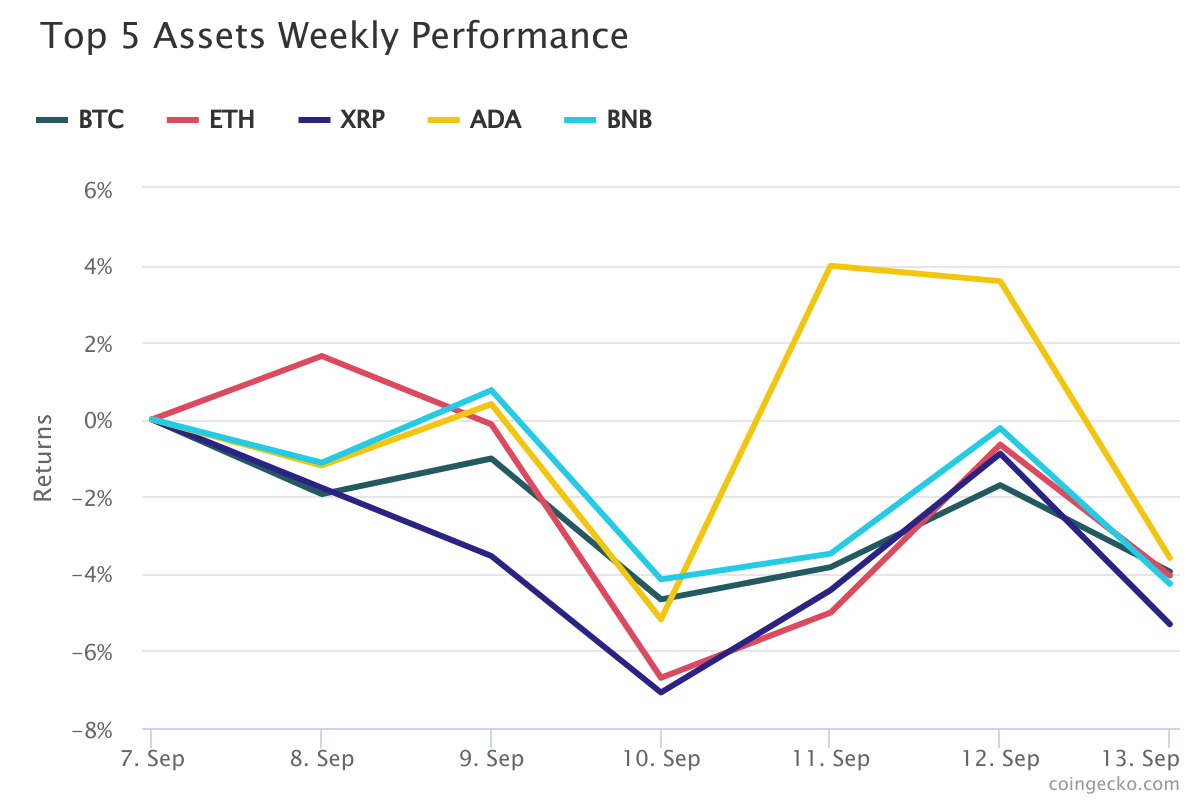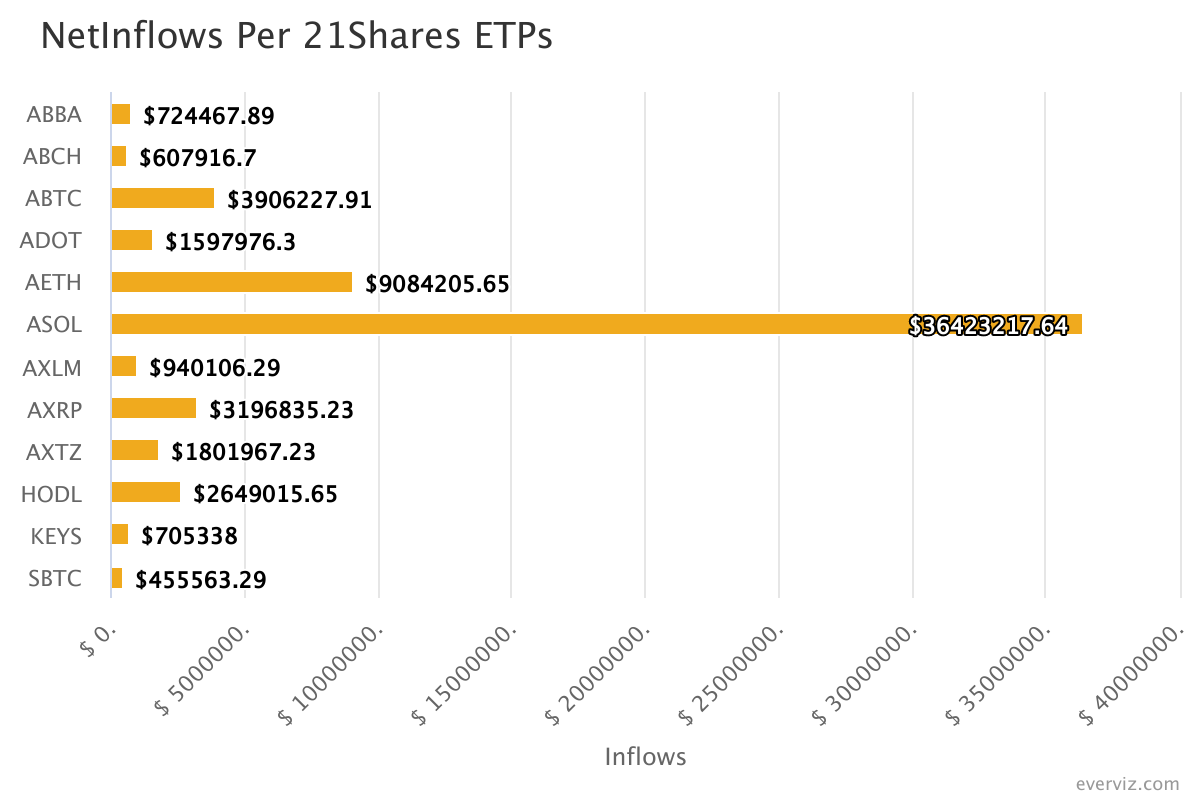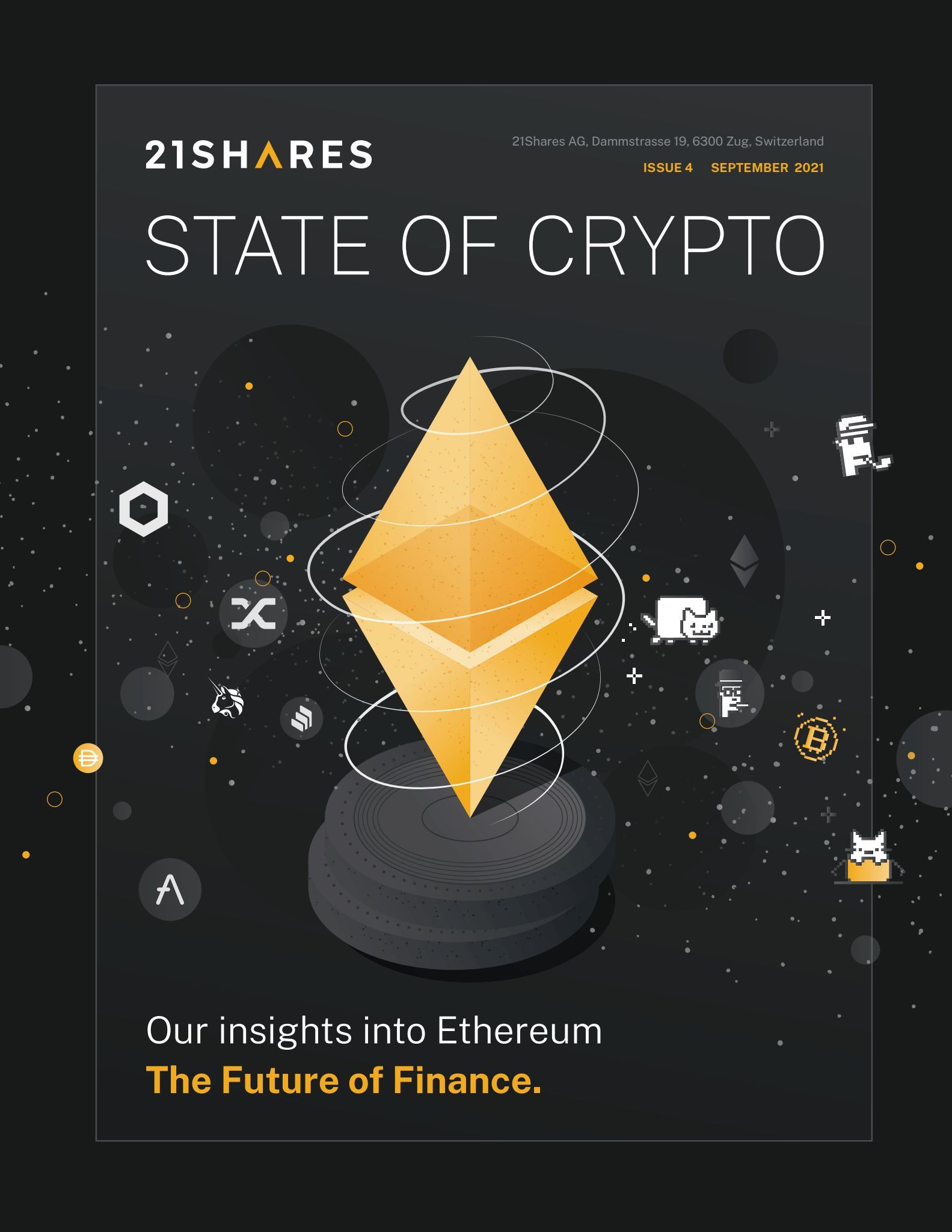Crypto Market Dips Amid Liquidations and SEC Scrutiny



Market Outlook
The majority of the crypto market dropped by more than 15% in the past seven days, triggered explicitly by long liquidations on traditional venues estimated at over $2B and decentralized lending platforms. Last week, $168M worth of liquidations occurred mainly on Aave and Aave v2. Yesterday, Cardano launched the long-overdue smart contract functionality on their platform, however, Ada trades 22% down its all-time high, but so does Ethereum (~25%).

The recent price action of ADA is mainly associated with the current market correction. However, ADA faces technical issues, and misunderstandings from the community on the fundamental front with its accounting model dubbed eUTXO (Extended Unspent Transaction Output (eUTXO). This model is the complete opposite of Ethereum's account-based system tracking users' balance and allowing investors to spend their cryptoassets several times without spending their entire wallet’s funds. In the case of ADA, their model is based entirely on individual transactions, grouped in blocks slightly similar to Bitcoin's UTXO. On Bitcoin, by design, if a user has 2 BTC in a wallet and wants to send 1 BTC to a friend, the UTXO model will send 2 BTC to this person's friends. As such, the workaround is to send 1 BTC back to oneself, hence having two separate transactions; one for their friend and the other for themselves. With complex transactions on DeFi applications this account model adds more complexity than necessary.
The Cardano team claimed that smart contracts applications would be able to send several transactions in a block (ie, multiple UTXOs) to avoid Bitcoin's issues which will provide scaling benefits. Although this is very early to tell, we will see evidence of activity picking up once there are material implementations of applications on Cardano and get more color on both the developer and user experience. This adoption will take a few months to witness as other Ethereum competitors such as Solana and Fantom and L2 solutions such as Arbitrum keep growing in terms of total value locked and applications launched. Nonetheless, it wouldn't come out as a surprise if Cardano launched a liquidity program with hundreds of millions of dollars similar to Fantom and Avalanche to attract users in the future
Weekly Returns
The returns of the top five crypto assets over the last week were as follows — BTC (-3.94%), ETH (-4.04%), BNB (-4.25%), XRP (-5.3%), and ADA (-3.58%).

Net Inflows per 21Shares ETP
The net inflows of our ETPs combining $64.79 million in the past week, were as follows: AADA (+$2,701,115.46), ABBA(+$724,467.89), ABCH($607,916.70), ABTC ($3,906,227.91), ADOT (+$1,597,976.30), AETH (+$9,084,205.65), ASOL (+$36,423,217.64), AXLM(+$ 940,106.29),AXRP (+$3,196,835.23), AXTZ (+$1,801,967.23), HODL(+$2,649,015.65), KEYS(+$705,338.00), SBTC (+$455,563.29).

Media Coverage
A few days ago, 21Shares was featured in a Wall Street Journal article that was reporting on the best-performing exchange-traded products in the world this year and found out that the Top 10 are based out of Europe. WSJ reporter Michael Wursthorn picked up that 21Shares’ BNB ETP is up 10-fold this year. Moreover, 21Shares’ XRP ETP also jumped more than three-fold.
“The toughest clients understand the nuances… But I literally built this product for my mom,” WSJ quoted 21Shares’ Co-founder and President Ophelia Snyder, commenting on the volatility and therefore risk that comes with crypto ETPs. 21Shares ETPs are built in a way that would be so simple for even our parents to use.
You can check out our ETPs here.
Have you checked out our latest State of Crypto? Click on the cover below and download your issue!
Once you click on the cover page: For web users, click on ‘print’ at the bottom right-hand side of the page. For mobile users, click on ‘continue to website’, then click at the top right-hand side on the three dots, then click ‘direct download’.

News
Crypto Trading Platforms May Need to Register with SEC
What happened?
Today, Chairman of Securities and Exchange Commission (SEC) Gary Gensler will be standing before the US Senate to express the agency’s view on investor protection in crypto. Gensler has been arguing that binding crypto trading venues by regulatory frameworks is aimed to guard against illicit activity, and in turn protect investors and consumers, and ensure financial stability. However, former Commodity Futures Trading Commissioner Brian Quentenz begs to differ. He tweeted earlier in August that the SEC has no authority over pure commodities (be they wheat or cryptocurrencies) or their trading venues. Gensler will need Congress to grant the SEC enough power to make the trading platforms comply.
Why does it matter?
Having crypto trading platforms registered as securities exchanges will hinder operations since the SEC is not equipped and thus lacks the understanding required to regulate commodities as big as crypto assets. The SEC has been wrestling with BlockFi whose CEO insists BlockFi’s interest account service is not a security. Coinbase has also been threatened to be sued by the securities regulator over a crypto lending product that has not been launched to begin with.
This all goes inline with our thesis that many crypto and DeFi projects based in the US will opt for crypto-friendlier environments in order to grow without regulatory friction. We, at 21Shares, see founders flocking with their teams to countries like Singapore, Malta, and Switzerland, that already have projects such as Solana Labs and Ethereum Foundation to speak volumes for the country’s stance on neutrality, freedom and security.
Disclaimer
The information provided does not constitute a prospectus or other offering material and does not contain or constitute an offer to sell or a solicitation of any offer to buy securities in any jurisdiction. Some of the information published herein may contain forward-looking statements. Readers are cautioned that any such forward-looking statements are not guarantees of future performance and involve risks and uncertainties and that actual results may differ materially from those in the forward-looking statements as a result of various factors. The information contained herein may not be considered as economic, legal, tax or other advice and users are cautioned to base investment decisions or other decisions solely on the content hereof.

.jpg)















